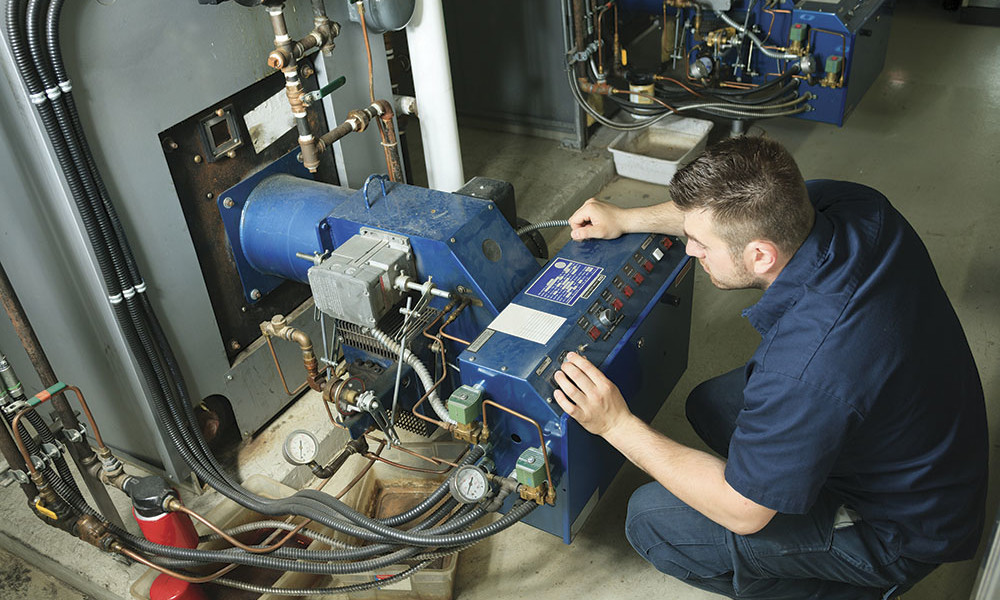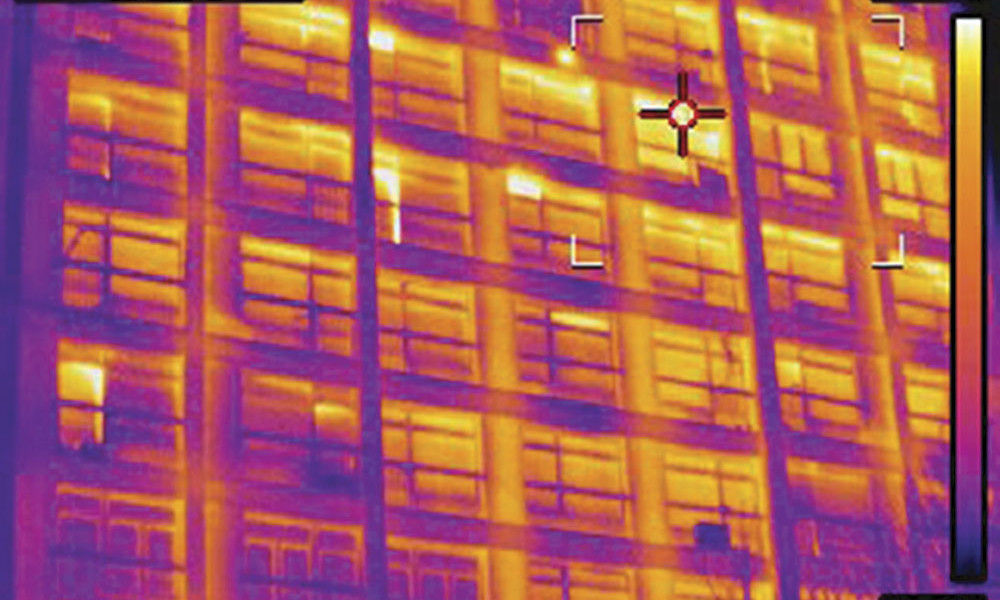Predictive Maintenance: Making proactive choices to mitigate potential failures
By Timothy Schipper
A mentor once told me: “Maintenance is like aspirin. Too much will kill you, too little is not effective and if it could cure baldness you would never catch me without it.” Just like aspirin, if predictive maintenance, or PdM, is not used for its intended purpose it becomes useless.
PdM techniques are used to determine the condition of assets in order to predict when a maintenance activity should be performed. PdM focuses on early detection of random failures that routine or time-based maintenance is not designed to capture. Overall, PdM techniques are used to detect failures sooner rather than later.
The main advantages of deploying PdM are:
1. Increased safety – PdM proactively addresses problems before failure occurs, creating a safer environment as issues are identified early and repairs can be mitigated.
2. Reduced equipment cost – Early detection allows for repairs to be made prior to a critical or catastrophic failure. Savings are realized since outages can be planned, personnel scheduled and parts ordered without being expedited.
3. Reduced labor cost – Early detection of catastrophic failures. Early detection allows for a more strategic approach and reduction in call outs. When repairs are scheduled, they require less time as only a single component is being addressed and other components are not impacted through collateral damage.
4. Reduced productivity loss – When failures occur, it is a major disruption. Component replacement or repairs can be scheduled for off-peak hours to reduce the impact on productivity and personnel.
5. Increased revenue – Early detection allows for repairs instead of replacements, reduces labor costs and reduces collateral damage. This equates to lower maintenance costs.
One of the biggest misconceptions is that adopting PdM will deliver a significant savings to the bottom line. The very nature of predicting a failure does not necessarily reduce routine or time-based maintenance; it simply uses different methods to identify failures early to be proactive.
These planned and scheduled events do equate to a cost savings, however, it is the avoidance of the cost of failure where PdM’s true value is realized. To properly capture the value of PdM, the cost avoidance must be quantified as in the following facilities management proposal:
A recent assessment of potential issues with lighting ballasts proved the true value of PdM. It was difficult to tell which ballasts may be going bad merely by looking at them. Replacing one ballast at a time is inefficient and time consuming. However, utilizing infrared scans, technicians can identify which ballasts are hot and thus in need of repair. This way, the entire floor can be maintained at one time.
A review of work history for a building with 200 ballast changes indicated 200 separate trips to address issues, for an average of 4 per week. A quick cost estimate shows:
> 200 trips x 30-minute travel time (campus setting) to and from x $18 per hour (non-burdened rate) = $1,800.
> Ballast replacement time was not accounted for since that work would still be conducted.
> Reduce travel time by 25 percent by using IR scans: 50 x 30 min x $18 per hour = $450. While not a huge number, it is a 75 percent reduction in cost with a conservative reduction in travel time. Over time, utilizing PdM could have a substantial impact on the bottom line.
Improper use of PdM
The goal of PdM is to identify an indication of performance degradation when the maintenance activity is most cost effective and before the asset loses performance or suffers a functional failure. This is in contrast to the traditional time and/or meter-based maintenance, where a piece of equipment undergoes a maintenance activity whether needed or not. Time-based maintenance is still necessary and should be considered when developing an asset care program. However, it is labor intensive and ineffective for identifying problems that develop between scheduled activities and is not cost effective.
PdM utilizes nondestructive testing technologies such as infrared, vibration analysis, oil analysis, ultrasonic (acoustic) and other online tests. Evaluations of actual equipment are also utilized in combination with measurement of process performance to trigger maintenance conditions when analyses show assets operating outside of desired parameters.
PdM shouldn’t be limited to just equipment. It is a great tool to leverage in energy-analysis/conservation and roof-management programs. IR scans of HVAC systems and building envelopes can identify where conditioned air is lost. It can help determine thin areas of insulation and heat/cooling loss through windows. IR scans of roofs can peer underneath ballast and other roofing material to identify where water is being held or possibly leaking through.
Determining when and where to use PdM, or any maintenance strategy, is critical. Remember the aspirin? Maintenance is not a one-size-fits-all activity. Progressive organizations use sound work identification and business case processes to determine where, when and to what extent PdM is leveraged.
An unfortunate situation impacting numerous healthcare systems is the disregard of data obtained using IR scans and vibrational analysis. When asked how things are going, maintenance often reports they don’t know. PdM provides information but, if that information is not reviewed and utilized, then it becomes worthless. Only by acting will the organization benefit. Whether conducted in-house by a trained and equipped technician or by a third party, it is imperative to take corrective action on any identified issues to improve the lifecycle care of the equipment.
Best Practice Benchmark Maintenance Strategies
Best practice benchmark maintenance strategies developed by Kyoumars Bahrami in “A Maintenance Improvement Program Benchmarking” and presented at MARCON (University of Tennessee College of Engineering):
Monthly Maintenance Strategies:
Predictive Maintenance: Total Hours PdM/Total Maintenance Hours Available ~50%
Preventive Maintenance: Total Hours PM/Total Maintenance Hours Available ~20%
Planned Reactive Maintenance: Total Hours PRM/Total Maintenance Hours Available ~20%
Reactive Emergency: Total REM/Total Maintenance Hours Available ~2%
Reactive Non-Emergency: Total RNEM/Total Maintenance Hours Available ~8%
Maintenance Categories and Definitions
As established by the International Facility Maintenance Association and Building Owners of America.
Predictive Maintenance (PdM):
> IFMA: Routine maintenance, testing or inspection performed to anticipate failure using specific methods and equipment. Typical methods are vibration analysis, thermography, X-ray or acoustic systems.
> BOMA: Systems are inspected and maintained before they break, as a means of preventing the breakdown completely. PdM uses statistics, measurement and experience to determine the service interval for a particular piece of equipment. Typical measurements used in predictive maintenance include vibration analysis, infrared and ultrasonic testing.
Preventive Maintenance (PM):
> IFMA: Cyclical, planned work activities funded through the annual budget cycle, done to continue or achieve either the originally anticipated life of a fixed asset (i.e., buildings and fixed equipment), or an established suitable level of performance. Normal/routine maintenance is performed on capital assets such as buildings and fixed equipment to help them reach their originally anticipated life.
> BOMA: Preventive maintenance involves taking equipment apart, inspecting the parts, replacing any worn parts, replacing seals and gaskets, lubricating the moving parts to improve wear and putting the equipment back together. The centerpiece of the preventive maintenance program is a preventive maintenance schedule.
Reactive Maintenance (RM):
> IFMA: Unscheduled work that requires immediate action to restore services, to
remove problems that could interrupt activities, or to protect life and property.
> BOMA: Reactive maintenance occurs when the building system has already broken and needs repairing or requires calibration. Reactive maintenance issues are unexpected failures. When reactive maintenance is prevalent at a property, the engineers no longer control the work schedule — the work schedule controls them. In reactive maintenance, engineers often go from one system failure to another. As soon as they fix one component, something else breaks down.
Author: Timothy Schipper
Timothy Schipper is the regional director for engineering solutions for CBRE U.S. Central, East and EMEA. He has over 20 years of experience in maintenance and operations. Schipper is a Certified Maintenance Reliability Professional, Lean Six Sigma Black Belt and Reliability Centered Maintenance Practitioner.
Posted July 20, 2015
More Articles:
- CxA Workshop & Exam
Apr 29, 2024 – Apr 30, 2024 - EMP Seminar & Exam at CxEnergy 2024
Apr 29, 2024 – Apr 30, 2024 - CxEnergy
Apr 29, 2024 – May 2, 2024 - PHCC West 2024
Apr 29, 2024 – May 2, 2024 - Lean in Design Forum 2024
May 1, 2024 – May 2, 2024 - IFMA’s Facility Fusion Conference & Expo
May 5, 2024 – May 7, 2024 - ASHE Academy 2024
May 6, 2024 – May 10, 2024












